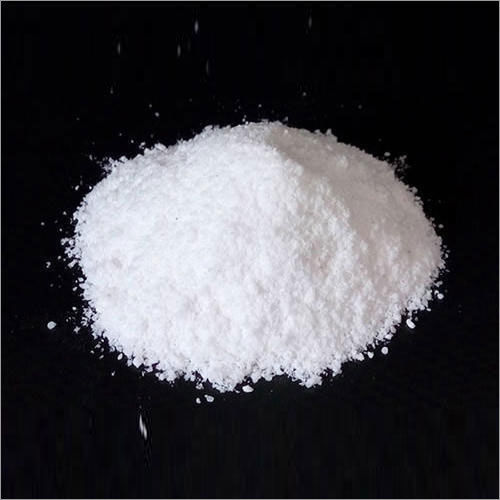Welcome to Our Company
Calcium Bromide
859 INR/Kilograms
Product Details:
- Purity 99%
- Molecular Formula CaBr2
- Storage Room Temperature
- Density 3.353 to 3.464 Gram per cubic centimeter(g/cm3)
- Solubility It is highly soluble in water, forming a clear, colorless to pale yellow solution
- Appearance Calcium bromide is typically found as a white crystalline solid
- Physical Form Powder
- Click to View more
X
Calcium Bromide Price And Quantity
- 1 Kilograms
- 850.00 - 999.00 INR/Kilograms
- 859 INR/Kilograms
Calcium Bromide Product Specifications
- 99%
- It is highly soluble in water, forming a clear, colorless to pale yellow solution
- Calcium bromide is typically found as a white crystalline solid
- CaBr2
- Room Temperature
- 3.353 to 3.464 Gram per cubic centimeter(g/cm3)
- Powder
- Industrial
- 730 degree centigrade
Calcium Bromide Trade Information
- 100 Kilograms Per Week
- 1 Week
Product Description
Available in white crystalline form, calcium bromide is well known for its strong water solubility level. By reacting with acids, it forms hydrogen bromide. Its chemical property remains stable at normal temperature. Application of calcium bromide can be noticed in oil and gas refineries where it is used as a completion brine. It is also used as a drilling mud. Free from odor, this chemical is reckoned for its pure content and stable chemical attributes. Its melting point is 725 degree centigrade and its boiling point is 1367 degree centigrade.
Uses of Calcium Bromide:
Calcium bromide (CaBr2) is a chemical compound that finds several applications in different industries and processes. Here are some common uses of calcium bromide:
1. Drilling Fluids: One of the primary uses of calcium bromide is in the oil and gas industry as a component of drilling fluids. It is often used as a dense brine to control wellbore pressure during drilling and completion operations.
2. Dehydrating Agent: Calcium bromide is hygroscopic, meaning it has the ability to absorb and hold water molecules. It is used as a dehydrating agent in various chemical processes.
3. Electroplating: In electroplating applications, calcium bromide serves as an electrolyte, facilitating the deposition of metal coatings onto other surfaces.
4. Photography: Historically, calcium bromide was used in photography to make photographic papers sensitive to light. However, this application has decreased significantly with the advent of digital photography.
5. Pharmaceuticals: Calcium bromide has been used in some pharmaceutical preparations as an anticonvulsant, although its usage in this area has decreased due to the development of more effective medications.
6. Fire Retardants: Calcium bromide is used in some fire retardant formulations to reduce the flammability of certain materials.
7. Chemical Reactions: It can act as a reagent or catalyst in various chemical reactions and synthesis processes.
8. Medicine: In veterinary medicine, calcium bromide may be used as an antiepileptic drug for controlling seizures in dogs.
Calcium Bromide Properties:
Calcium bromide (CaBr2) is a chemical compound with various properties, both chemical and physical. Here are some key properties of calcium bromide:
1. Chemical Formula: CaBr2 (one calcium atom bonded with two bromine atoms).
2. Molar Mass: The molar mass of calcium bromide is approximately 199.89 g/mol.
3. Appearance: Calcium bromide is typically found as a white crystalline solid.
4. Solubility: It is highly soluble in water, forming a clear, colorless to pale yellow solution.
5. Density: The density of calcium bromide varies depending on its form and concentration, but it generally ranges from 3.353 to 3.464 g/cm3.
6. Melting Point: The melting point of calcium bromide is around 730 degree centigrade.
7. Boiling Point: The compound does not have a well-defined boiling point due to its tendency to decompose at high temperatures.
8. Hygroscopic: Calcium bromide is hygroscopic, meaning it can absorb and retain moisture from the surrounding atmosphere.
9. pH: When dissolved in water, calcium bromide solution is slightly acidic due to the hydrolysis of the bromide ion.
10. Reactivity: It is a salt and generally stable under normal conditions. However, it reacts with strong oxidizing agents.
FAQ:
Q: What is calcium bromide?
A: Calcium bromide (CaBr2) is a chemical compound composed of one calcium atom and two bromine atoms. It is a white crystalline solid that is highly soluble in water.
Q: What are the common uses of calcium bromide?
A: Calcium bromide has several applications, including its use as a component in drilling fluids in the oil and gas industry, a dehydrating agent, an electrolyte in electroplating, and a fire retardant. Historically, it was used in photography and as an anticonvulsant in pharmaceutical preparations.
Q: Is calcium bromide safe to handle?
A: While calcium bromide is relatively non-toxic, it can cause skin and eye irritation upon contact. It should not be ingested, and proper safety precautions must be followed when handling this compound.
Q: What is the appearance of calcium bromide?
A: Calcium bromide typically appears as a white crystalline solid.
Q: What is the solubility of calcium bromide?
A: Calcium bromide is highly soluble in water, forming a clear, colorless to pale yellow solution.
Q: What is the melting point of calcium bromide?
A: The melting point of calcium bromide is around 730 degree centigrade.
Q: What are some chemical reactions in which calcium bromide is used?
A: Calcium bromide can act as a reagent or catalyst in various chemical reactions and synthesis processes.
Q: Can calcium bromide be used as a medication?
A: Calcium bromide has been used as an antiepileptic drug in veterinary medicine to control seizures in dogs, although its usage has decreased with the development of more effective medications.
Q: What safety precautions should be taken when using calcium bromide?
A: Safety precautions include avoiding contact with skin and eyes, not ingesting the compound, and following proper handling and disposal procedures.
Q: Does calcium bromide have any environmental impacts?
A: Calcium bromide should be handled and disposed of responsibly to prevent any adverse environmental impacts. Like other bromide compounds, it can contribute to the bromide ion accumulation in water bodies, which might affect the water quality in certain cases.
Q: Are there any other applications of calcium bromide?
A: While the primary uses of calcium bromide are in the oil and gas industry, electroplating, and as a dehydrating agent, its applications may vary depending on specific industrial needs and ongoing research.
Tell us about your requirement

Price:
Quantity
Select Unit
- 50
- 100
- 200
- 250
- 500
- 1000+
Additional detail
Mobile number
Email








